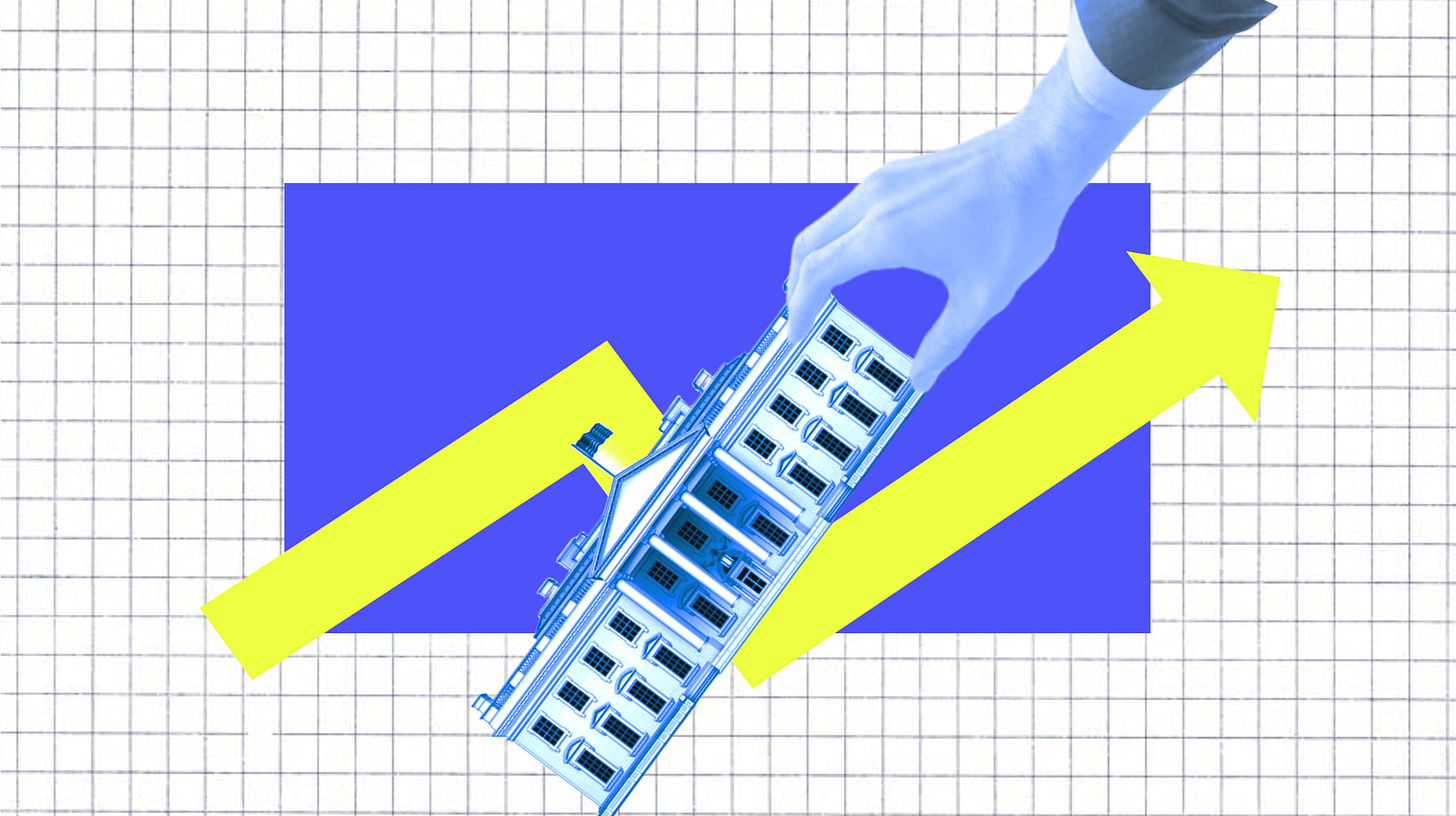As one president runs on defending democracy, and the other promises to re-establish American dominance, you might say that the most important question in the upcoming election is NOT which party in power will make it easier to earn an extra buck.
Well, 73 percent of voters said in a recent poll that strengthening the economy is their foremost priority. Luckily, academic research has revealed which party in the White House is better for the economy.
Let’s start by going through the numbers, and then look at the statistical analysis done by Princeton University economists Alan S. Blinder and Mark W. Watson.
Since 1928, the average annualized S&P 500 returns have been 14.43% with a Democrat in office, compared to 8.81% under Republican leadership. Analyzing time series starting from the end of a major crisis, such as World War 2, 1973 oil shocks and recession, and the dot-com bubble's collapse, up to today, reveals returns have consistently been better under Democratic presidents than Republican ones.
However, the historical trend of superior stock performance under Democrats has recently shifted. Post-Great Financial Crisis, returns have averaged 16.65% under Republicans and 14.69% under Democrats. Since 2017, stock market performance under Republicans has nearly double that under Democrats, with returns of 22.20% and 13.83%, respectively. You can look through the data yourself here, and the findings are below.
Looking at historical GDP fluctuations reveals a similar story, with economic growth tending to be steeper under Democratic presidents. In fact, the five highest growth quarters since 1948 occurred under Democratic presidents, while four of the five lowest came under Republicans. Brutal.
but don’t jump to conclusions yet.
In a 2016 study, Alan Blinder and Mark Watson, renowned Princeton University economists, investigate why “the US economy performs much better when a Democrat is president than when a Republican is.” They cite that along with stock market performance and economic growth, wealth inequality tends to decrease under Democratic presidents while recessions become less likely. They examined several factors, such as the president's party, which party controls Congress, and various macroeconomic indicators. They then tested whether any of these factors have a causal impact on the differences in economic outcomes between Democratic and Republican presidents. (Remember, correlation ≠ causation)
They found that exogenous macro factors explain 70 percent of the gap in economic performance under Democratic and Republican presidents since 1963. It explains 56 percent of the gap since 1948. Those macro factors include oil shocks, wars, and improvements in labor productivity (like the internet, or AI).
So, most of what happens in an economy during a president’s term is explained by things completely out of their control.
Next, they tested the most natural follow-up question: are Democrats more likely to get elected when economic forecasts are above average? Comparing one-year GDP growth projections from the Federal Reserve’s Greenbook to which party gets elected to the White House, the researchers revealed that Democrats are more likely to get elected when the forecasts are poor.
So basically, it mostly doesn’t matter which party is in the White House, and the best reason why the historical data suggests markets and the economy do better under Democratic presidents is “luck.”
The research’s findings make intuitive sense. Joe Biden isn’t sitting next to Sam Altman pumping out new and improved AI chatbots — the White House has had very little to do with the stock rally we've seen in recent months. Similarly, inflation peaked and began to reside at nearly the same time in every single major economy. Is Germany also a victim of Bidenflation, or were there larger forces at play?

This is not to say presidents have no impact on the economy, it is just far more slow. As much as the White House wants to take credit for Nvidia’s success, it will still take years for the money from the CHIPS Act to work its way into the economy. Forward-seeing presidential administrations and federal agencies have been long responsible for directing federal funding toward emerging technology, like building broadband infrastructure and the internet in the 1970s and 80s, which helped establish the dominance of U.S. technology companies for years to come.
Markets do price in long-tail impacts of presidential elections. After the June 27 presidential debate, which betting markets and polls suggest hurt President Biden’s chance of re-election, the yield curve steepened. The 30-year Treasury yield rose, though the yield curve remained inverted as it has been for two years. This pressure on the long tail of the yield curve likely reflects market sentiments that a potential Republican president’s policies would be inflationary (likely largely attributable to their promise to extend the 2017 tax cuts).
Either way, voters looking to elect a candidate that will better the economy will likely find it to be a self-fulfilling prophecy anyway. After the Clinton administration, the percentage of Democrats or Republicans that say the economy is doing well tends to dramatically swing at elections. In 2016, many Republicans who felt the economy was doing poorly suddenly found themselves in great economies after election night. Same with Democrats in 2020.

In the end, the economy in the next forty years depends on forward-thinking candidates, but the next four will depend more on prayers. And maybe this is just me, but that’s a little reassuring.
food for thought,
shreyas sinha
P.S. New video out now: I Investigate the World’s “Wealthiest” Country! Find it on YouTube (link below).







I think this election actually will have direct impact on Americans in terms of the economy compared to past years. Maga & republicans will control executive and both chambers, giving them free rain on extending Trump tax bill and levying tariffs / waves of protectionist policies
waiting for research on which president is better for lebron’s legacy